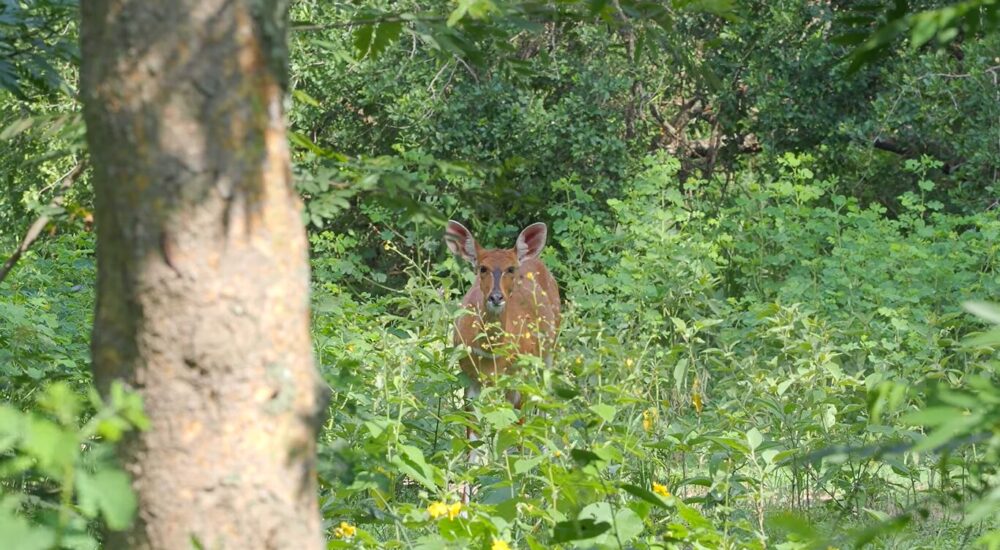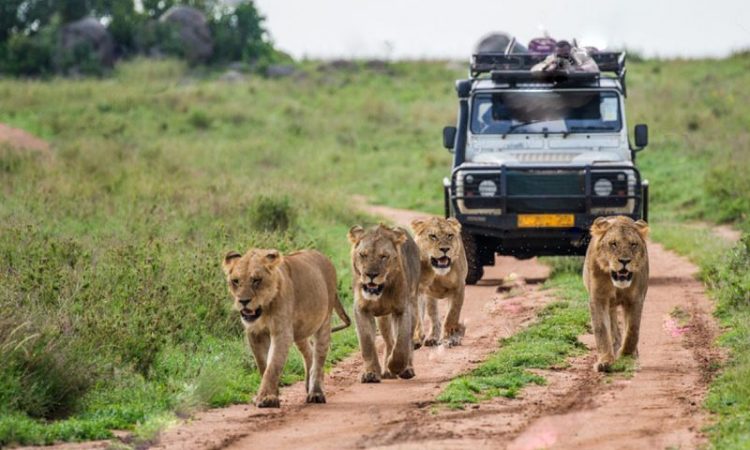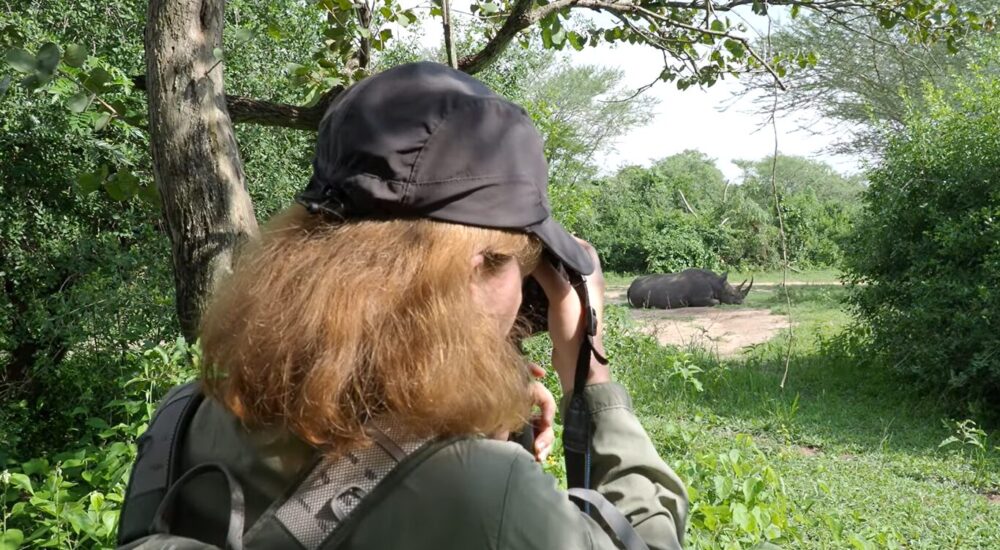Are you dreaming of a wildlife adventure in East Africa? Planning your safari for 2025…
Activities and attractions in Fort Portal Kabarole District
Activities and attractions in Fort Portal Kabarole District.
Named after Sir Gerald Portal, a British Special Commissioner for Uganda, whose monument adorns the main route of the town, activities and attractions in Fort Portal in western Uganda are housed at the seat of both Kabarole district and Toro kingdom. Situated between Semuliki National Park and Kibale National Park and the Rwenzori Mountains, this is a major market town.
How one arrives at the Fort Portal-Kabarole district?
By road.
From Kampala, the capital of Uganda, the 298 Km route runs via mityana-Mubende-kyegeggwa-kyenjojo to Fort Portal.
by airborne.
About two hours from kasese to Fort gateway, 1:30 minutes are scheduled and charted domestic flights from Entebbe to kasese run by Aerolink.
Events and attractions within Fort Portal-Kabarole area.
Go to the Amabere Caves.
Located approximately five kilometers from Fort Portal on the Bundibugyo Road, the Amabere Caves—also known as the Nyakasura Caves—have its Nyakasura Falls. Not exactly caves; more of a big overhang, the name Amabere Ga Nyina Mwiru translates as “Breasts of Nyinamwiru,” with Nyinamwiri being the daughter of a local usurper king who apparently had her breasts chopped off to make her less appealing to males.
When this fairly extreme strategy failed, the king Bukuku of Toro hid her in the cave. Her attractiveness still intact, nevertheless, she became pregnant to the Batembuzi King Isaza and subsequently gave birth to their son, Ndahura. Unable to nurse the baby herself, she turned to what seemed to be milk flowing from the stalactites, milky due to their calcium concentration.
Ndahura proceeded to fulfill a prophesy that he would ascend to king and inherit Bukuku’s throne—a kingdom truly Isaza’s. Later on, Ndahura established one of the major empires spanning the African major Lakes. That is so legend, then!
To be honest, the three nearby crater lakes, the waterfall at Amabere, and the lengthy trek in the vicinity would probably make the caverns worth seeing just.
Although the little pool itself is extremely cold, you may wind yourself surrounded by colobus monkeys. You can stand behind the waterfall, a fantastic experience.
Visit Semuliki National Park.
Though there is some, Semuliki National Park differs somewhat from other national parks in Uganda in that its major draw is its birds and hot springs rather than any other animal species. Nestled on Uganda’s border with the Democratic Republic of the Congo with Lake Albert to the north and the breathtaking Rwenzori Mountains to the south-east, the park is near to the Semuliki and Lamia rivers.
Semuliki National Park is a Covering an area of 220sq kilometers and some 150 miles from Kampala, the park has 442 bird species, 53 animals, and looks away if you are squeamish ~ Goliath and Rhinoceros beetles some of which are four inches large!
![]()
A Pygmy community and the hot springs at adjacent Sempaya, close to Budibugyo town most renowned for having a hot water geyser shooting up from an eight-meter wide hole ~ the biggest of its type in Uganda, are additional attractions.
Mungilo Waterfall in Semuliki National Park is worth visiting if you like bird watching, swimming, and fishing.
Managed by the Ugandan Wildlife Authority, the park—one of Uganda’s newest—has been set aside as recently as 1993 and is home to around 100 Batwa people who depend on the forest for food, medicinal herbs, and building materials.
See National Park of Rwenzori Mountains.
Designed in 1991 to preserve the highest sections of the mountain range and spans much of the center and eastern half of the mountains ~ an area of about 384 sq miles, activities and attractions in Fort Portal – Rwenzori Mountains National Park was declared in 1991 obtaining World Heritage site status in 1994. Over seventy animal species and 217 bird species call it home.
Still, the mountains are most famous for their breathtaking vistas and as a world-class climbing and trekking destination. For those doing these longer alpine excursions, there are many spread by established campgrounds including the John Matte Camp on the
Situated about 200 miles west of Kampala, the area was declared in 1993 and has over seventy animal species in addition to 375 bird species including the White-spotted Flufftail, Yellow-spotted Barbet, Hairy-breasted Barbet, Yellow-billed Barbet, Western Nicator, Grey-winging Robin-chat, white-tailed ant-thrush, Scrub-robin supported brown-backed Black-and- white Shalker-flycatcher, Brown-throated Wattle-eye, Golden Sunbird, Brown-crowned Tchagra,
Among others Bocage’s Bush-shrike, Black Bishop, White-breasted Negrofinch, Black-crowned Waxbill.
Though one of the primary draws of the park is its chimpanzee tracking experience along the Kanyanchu Primate Walk, where 13 species of chimps may be observed going about their daily business. Mostly Batoro and Bakiga, the residents of Kibale National Park subsequently joined by arriving Bakiga from south-western Uganda are native to the region.
Emphasizing conservation, the park is split into seven zones for management: research, natural reserve, civic-cultural, recreation, harvest, community and protection.
The park has plenty of lodging, including safari lodges, which while sometimes costly enable you maximize your stay instead of daily journey from Fort Portal about 20 miles distant to the north.
Using our contact form, let us know if you have further knowledge about the Kibale National Park—places of interest or lodging contact. Now see the main tourist attractions in the park shown above.
Most of those visiting Western Uganda will treat themselves to a once-in- a-lifetime safari in Queen Elizabeth National Park.
Once-in-a-lifetime since so many safari trips keep you confined in a small minivan allowing you to take turns to pop your head through the skylight taking photos through the windows; but, with many Queen Elizabeth National Park safaris you get to sit on top of a jeep as you travel across the park, capturing amazing images such those in our slideshow (right).
Go to Queen Elizabeth National Park.
For those seeking a safari, Queen Elizabeth National Park is the most visited site in Uganda mostly due to its diversity ranging from the Rwenzori Mountains crossing the border with Democratic Republic of Congo to the shores of Lake Edward absorbing forest, savannah, and wetlands along the way.
Originally known as Kazinga National Park until Queen Elizabeth visited in 1954, Queen Elizabeth National Park was established on March 31, 1952, under the National Park Ordinance in order to prevent uncontrolled hunting by both Africans and Europeans and today is home buffalo, elephants, lions, leopards, hyenas antelopes and so much more, in fact 95 mammal species. Oh, also rarely seen much outside Uganda, those lions are the variation of tree climbing lions!
![]()
Along with the huge flamingos, it has around 600 bird species, the most of any protected region in Africa including the African skimmer, Chapin’s flycatcher, pink-backed pelicans, Papyrus canary, Shoebill stork, martial eagle, black-rumped buttonquail.
When planning Queen Elizabeth safaris, we advise you to enjoy a boat ride along the Kazinga channel, a man-made waterway linking Lake George to Lake Edward from where you will have a great view of most of the mammals that call the park home, close up (but very safe!). The shores of the channel are heavily populated by the park’s mammals as well as reptiles such crocodiles.
Queen Elizabeth has many lodging choices that fit every budget and several different safari excursion companies. For those on a longer safari, the park offers considerably more walks, camping, and other activities as well as local culture.
Fort Portal activities and attractions Fishing on Lake Albert
See Lake Albert the Ntoroko part.
Activities and attractions in Fort Portal – European explorers Samuel Baker and Sass Flora “discovered it” and called it in honor of Prince Albert, consort of Queen Victoria who had died three years before.
After President Mobutu Sese Seko Kuku Ngbendu wa Za Banga of the Congo (President 24 November 1965 – 16 May 1997), it was briefly renamed Lake Mobutu Sese Seko Ngbendu wa Za Banga before returning to its generally known name and is Africa’s seventh largest lake measuring some 100 miles long and 19 miles wide with a maximum depth of 168 feet.
The most northern of the lakes in the Albertine Rift, which spans portions of Uganda, the Democratic Republic of the Congo (DRC), Rwanda, Burundi and Tanzania, Lake Albert is between the two countries.
Water from the Semliki River from south and the Victoria Nile at its more northern end sources Lake Albert. The water runs north into the Albert Nile, which becomes the Bahr-el-Jebel when it reaches South Sudan. (It is thought that the inflow from the Victoria Nile was obstructed during the last glacial era, between 14500 and 1200 years ago, which caused a notable decline in water level.)
Though a sizable lake, there are no significant settlements on its Ugandan side; rather, a somewhat modest population resides in surrounding villages with Bulisa as the main town at the north end of Lake Albert, with about 30,000 people.
Using our contact form, let us know if you have further knowledge about Lake Albert—reviews, attractions, or lodging contacts.
With a population of around 55,000 Fort Portal lies slightly under 200 kilometers from Kampala, the capital of Uganda. Named after Sir Gerald Herbert Portal, who was appointed British Special Commissioner to East Africa in 1892 and visited Uganda to determine if the territory ought to be replaced by a British Protectorate in lieu of the failing Imperial British East Africa Company.
Although the British Government approved his suggestion that it should become a protectorate, he passed away six months before his advice came to pass on June 18, 1894, at the age of thirty-six. Still in the town center is his monument.
From a lively nightlife with town center clubs like Africana and the Forest Bar to daily markets all around Fort Portal, there is lots to see and do out and about.
Most will, however, be drawn to Fort Portal’s tourism offerings, which vary from caverns and waterfalls to Royal Places (with Fort Portal serving as the historic Toro Kingdom’s home) and tombs to its tea farms and guided hikes over crater lakes and with their boiling origins.
From where you may base visits and expeditions to Queen Elizabeth National Park, the Bigodi Wetland Sanctuary, and the Kibale forest, there is decent lodging in and around Fort Portal. Food is ample for those who would rather have foreign cuisine with the Dutchess hotel and restaurant in the middle of town offering pizzas, burgers etc. as well as for those who want traditional African food.
Although we strive to cover everything you need to know about Fort Portal on these pages, if you know of any more tourist attractions there please get in touch and report it using our contact form.
Visit the marshland of Bigodi Sanctuary.
Activities and attractions in Fort Portal – Bigodi is a community-based organization founded with the intention of improving the way of life and status of lower class families living in Bigodi village and surrounding areas.
Starting with four people who trained with Kibale Association for Rural and Environmental Development, it discovered a loop and unauthenticated community walk and derived means in 2016, more authentic giving scholastic materials, improving homes and providing employment to the community guide and demonstrators.
Situated thirty (30) kilometers from Fort Portal town, Bigodi Wetland Community Walk (BICOWA) is six (6) kilometers from Kibale Forest National Park.
By personally assisting the Bigodi community you are helping them to avoid invading the protected region, thereby teaching them to preserve for the closest Chimpanzees habitat, the Kibale Forest National Park.
This community oriented group gives you chances to witness six distinct kinds of Primates on your tour plus over 160 bird species, butterflies, and so much more.
When would be a good visit?
Fort Portal is one of the locations in Uganda with the finest year-round temperature; it can be visited any time of year.


